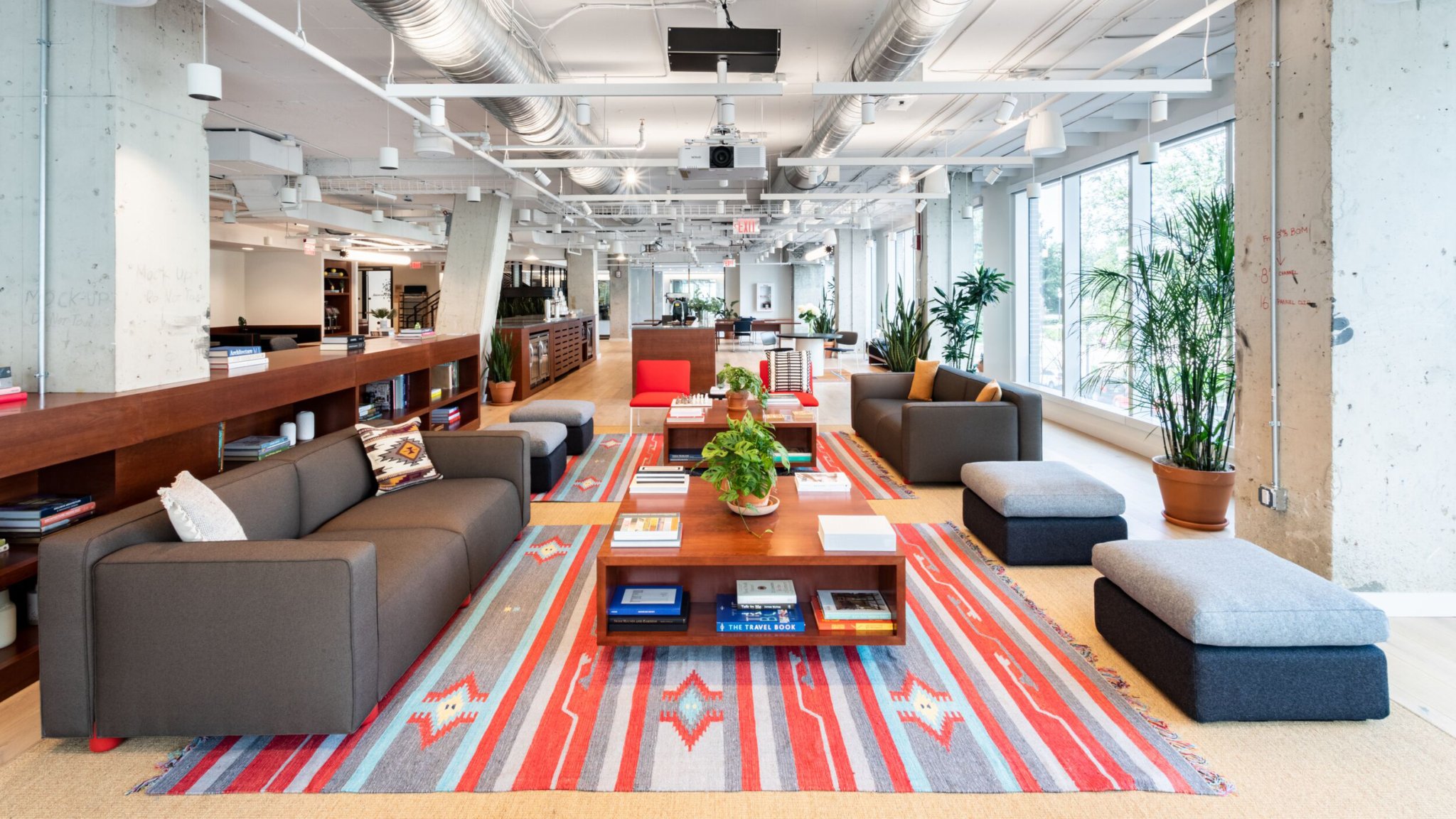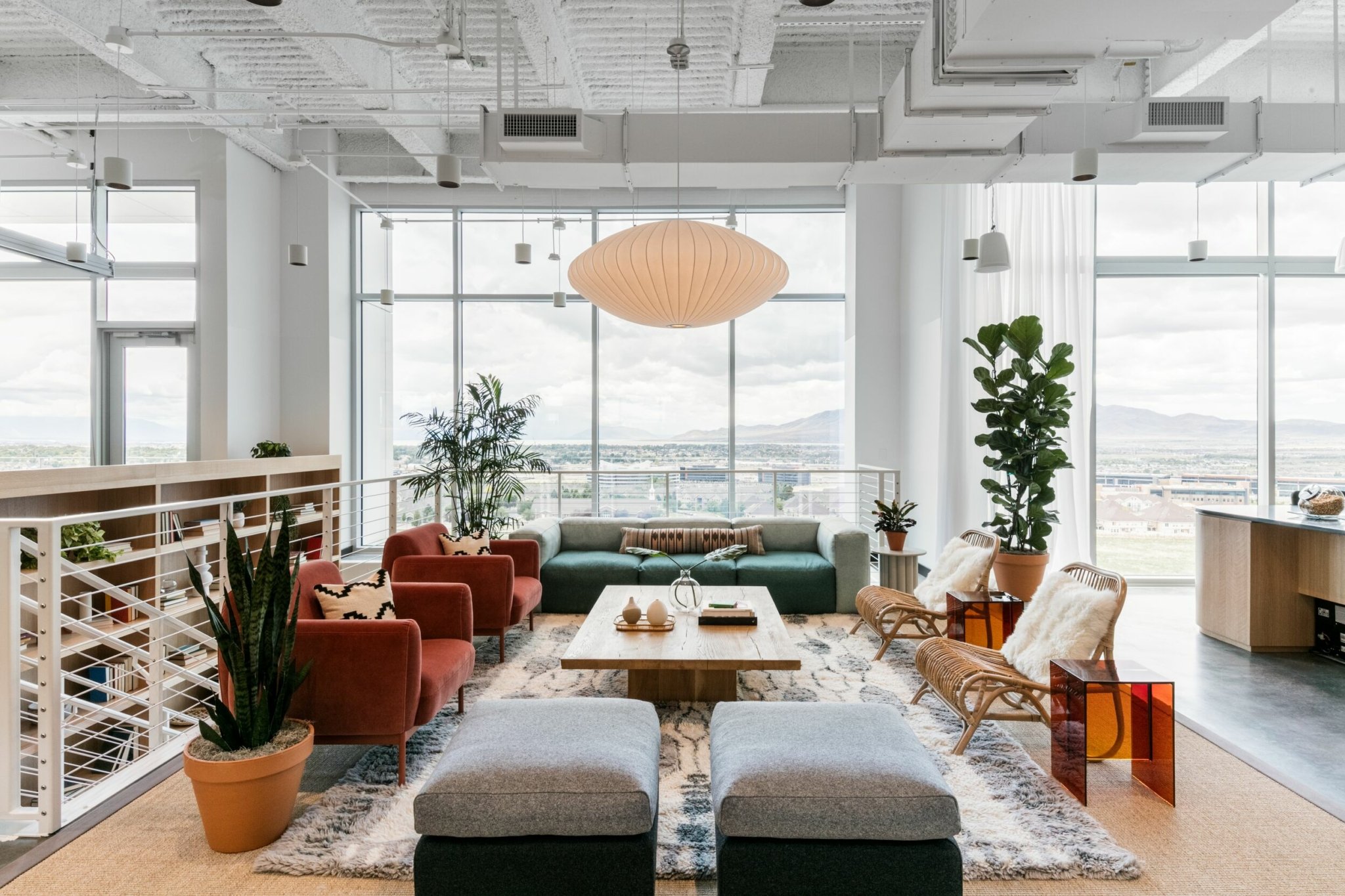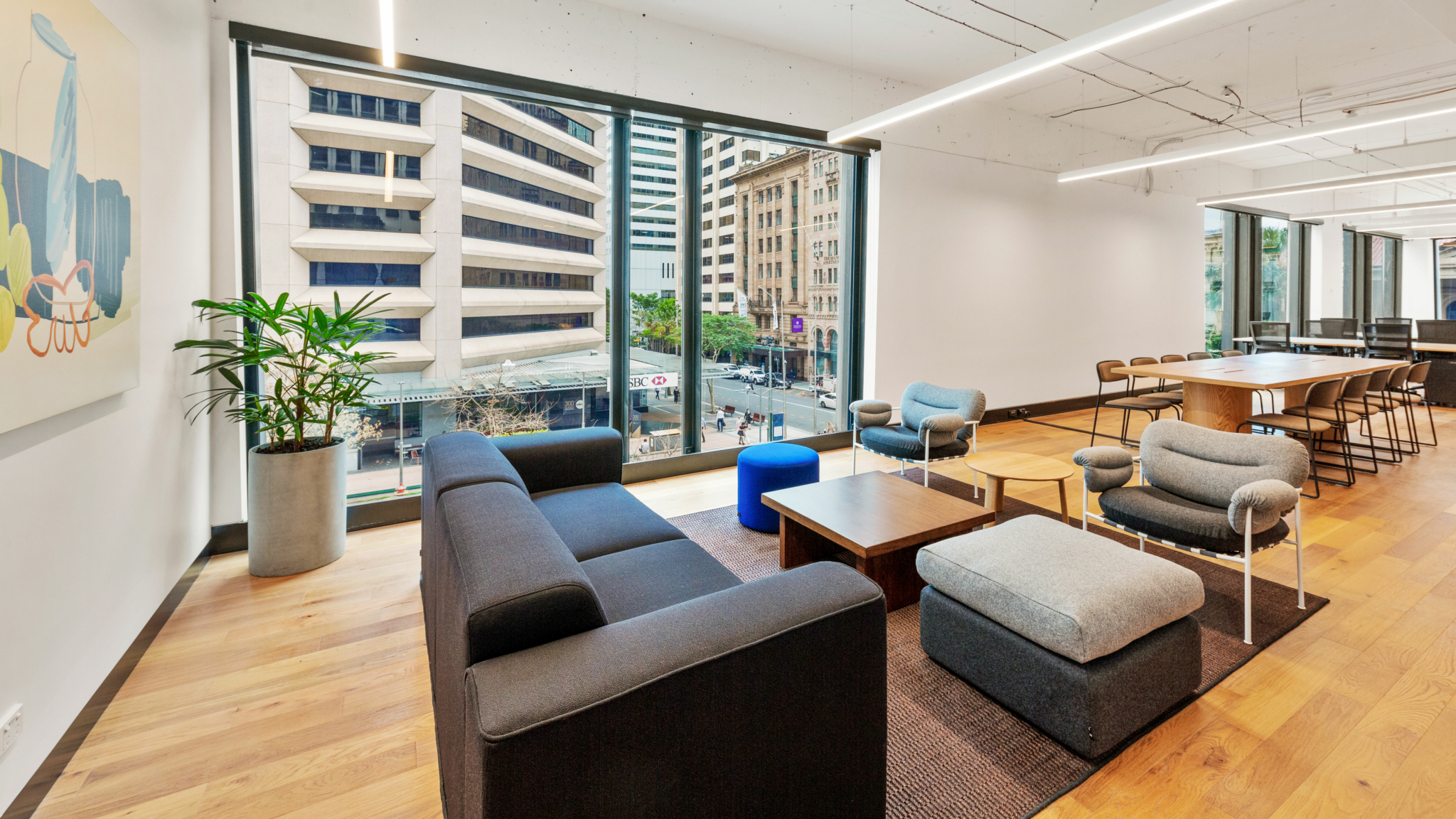The workplace changed dramatically when companies across the world sent their employees home to work due to the COVID-19 pandemic. While some remote workers have reported higher levels of productivity, they also have been prone to burnout and have had a harder time connecting with coworkers.
Employers worry that a fully remote model stifles innovation and inhibits company culture. That’s why many companies are turning to a hybrid approach, where employees work from home on individual tasks and head into the office for meetings, collaboration sessions, and group projects.
Ford Motor Company, one of the first major companies to formalize a hybrid model, is renovating its Dearborn, Michigan, campus, and Ford’s downtown Detroit innovation hub is scheduled to open in 2023. Ford’s future workspaces will be flexible, adaptable, and versatile, with features like movable walls and configurable furniture. But you don’t need to have the kind of power and resources a large company has to create a similar type of dynamic, multi-use workspace.
In response to swiftly changing workplace trends and mounting member requests, WeWork created the collaboration hub, a flexible, customizable workplace design that prioritizes flexibility, enhances teamwork, and fosters creativity. Collaboration hubs are suitable for large and small organizations in nearly any industry, and can be customized to fit the way a company works.
PayPay, a Japanese cashless payment service, revamped its office space with the help of WeWork to become a collaboration hub with separate zones, including ones for Active Collaboration, Community and Social, and Learning. Here’s how three other global companies are stepping into the future of the workplace with collaboration hubs at WeWork.
A consumer goods company goes urban in London
The challenge: As companies were planning a careful return to the office in late 2020, a large consumer goods company based in the London suburbs wanted to optimize employee safety by de-densifying its headquarters and reducing commute times. But it wanted a solution that would help the company attract and retain the kind of talent that drives innovation.
The solution: WeWork utilized its large London portfolio to provide the firm with dedicated space in a central city location that’s close to Heathrow Airport. Designed as a collaboration hub, the space features a flexible layout and, like all WeWork spaces worldwide, is designed to optimize productivity and creativity. A flexible lease keeps all future options on the table for the company.

The result: City-dwelling employees can now supplement their at-home work schedules with visits to an office closer to where they live. The collaboration hub has separate quiet spaces for individual work, social areas for impromptu interactions, and configurable, all-purpose spaces for meetings, brainstorming sessions, and project work. WeWork’s amenities foster wellness, community, and the kinds of perks that attract creative talent.
An investment bank supplements its work-from-home strategy
The challenge: A global investment bank’s work-from-home policy was working out well enough for the company and its employees. But the company wanted an intentionally designed workspace that prioritizes safety, where teams could have face-to-face, in-person interactions that drive innovation, productivity, and relationships.
The solution: WeWork created a custom-built collaboration hub for the bank in a dedicated, custom office suite. Flexible terms will enable the company to scale up or down as needed in the coming months, depending on whether the bank decides to make flexible work a permanent option.

The result: Employees spending a day at the office now enjoy a dynamic workspace designed for multiple needs and uses. The space features a variety of activity-based areas, where social interactions and collaboration take place, and focus-based areas, where individuals can work in quieter surroundings with minimal distractions. This hybrid work model offers the company and its workforce the best of both worlds—the ability to work from home when it makes sense, and the opportunity to work together with colleagues in a dedicated, purpose-driven, de-densified space.
A global marketing firm explores a new operating model
The challenge: An international marketing agency was facing an imminent, long-term lease renewal on its 85,000-square-foot, multi-floor headquarters. But with many of the company’s hundreds of employees still working from home, the company wanted to look into alternatives to the traditional workplace model. It envisioned a campus-style office environment that could support employees who work from home while providing work-from-office employees with a flexible workspace.
The solution: WeWork helped the firm downsize its large headquarters to a smaller, full-floor workspace comprising 32,000 square feet and fully customized to meet the unique needs of the firm and its employees. Flexible terms include one-year extension options that enable the company to try out the new model without a long-term commitment or large capital expenditure.
The result: The new collaboration hub is designed to promote connectivity and productivity. It includes plenty of flexible, activity-based work areas for formal or informal meetings, socializing, brainstorming, and collaborating. Remote employees can now take advantage of a hybrid work model that allows them to continue working from home but use the collaboration hub to meet with teams and colleagues in person. All employees have access to the common spaces in the building, including lounges, kitchens, private phone booths, conference rooms, recreation areas, and event spaces.

Collaboration hubs are one of many flexible office space solutions that companies are using to help remote workers stay immersed in the company culture and connect easily with colleagues. They provide businesses with opportunities to innovate, collaborate, and reinvent the way they work. WeWork has the space, and the expertise, to make it happen.
Kristen Bailey is a veteran writer and editor based in beautiful Lincoln, Nebraska. She has a penchant for helping large and small brands create stories that tell the why.
Rethinking your workspace?










